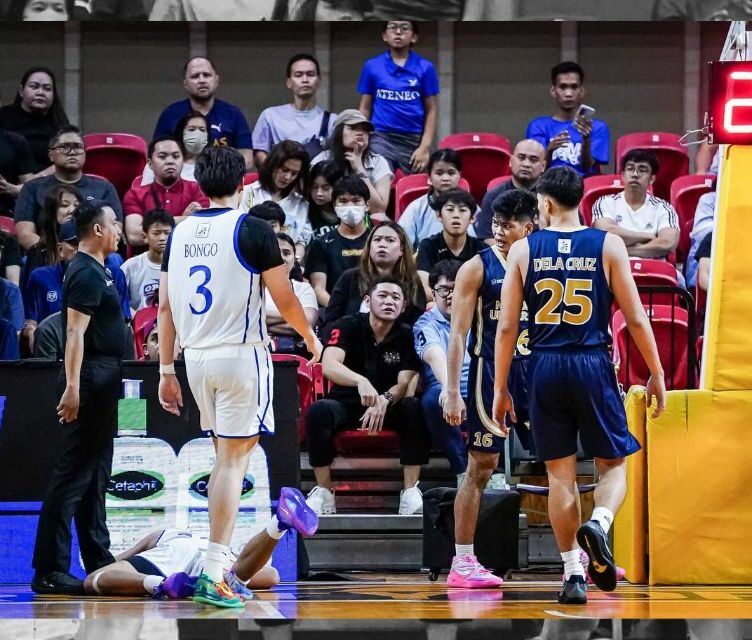BACK in the 2000s, dreams of becoming like PewDiePie or Markiplier were quickly dismissed by angry parents who said that playing games is a waste of time and that pursuing it as a career will get you nowhere. They even said it wouldn’t earn you a penny.
Now, the gaming community in the Philippines is made up of over 43 million people. Numerous schools and even companies have started to hold gaming tournaments, especially amid the COVID-19 pandemic, where everyone was forced to stay in the comfort of their homes.
Many people who have been gaming for a long time have taken to streaming websites like Twitch TV or Facebook Gaming to share their gameplay with the rest of the world. Otherwise known as GianSanity online, 25-year-old Gian Abilla has been streaming since 2020. From 12 viewers, he now has a following of over 397, 000 people on Facebook and more than 50,000 on Twitch, earning around $1,500 to $2,500 per stream.
Abilla also shared that on average, people on Facebook Gaming can earn over $3,000 monthly with each stream, depending on the partnership they signed with the social networking app.
Meanwhile, streaming rates on Twitch are better, allowing streamers to be paid at least $3,000 to $5,000 monthly.
How is it then that a hobby that used to be looked down on in the Philippines can now be used to make a living? In the past, gamers were often labeled as lazy; some boomers would even go so far as to say those who do nothing but game have no direction in life.
Today, even schools and business companies are looking for talented gamers among their people, validating the idea that the skills of a gamer go beyond just playing. There were also auditions and scouting conducted all over the country and the world in the attempt to find the next greatest player to compete in the gaming pro scene, especially now that the Olympics have finally introduced an e-sports category in the international multi-sport event.
What is the state of streaming in the Philippines? And with the way things are going now, what do streamers think the Philippines has in store for their future?
The need to stream
Third-year accountancy student James Virtudes, 21, began taking an interest in gaming during his childhood. However, it was only during the onset of the COVID-19 pandemic that he started taking gaming seriously. It was also the same time he got a hold of his own gaming device.
Before diving into the realms of Valorant, Virtudes said he previously tried the celebrated multiplayer online battle arena (MOBA) video game Defense of the Ancients (DOTA) 2 and other first-person shooter (FPS) games Counter-Strike: Global Offensive (CS: GO), Rules of Survival (ROS), and Player Unknown’s Battleground (PUBG).
The similarities between these FPS games helped him get familiar with Valorant’s gameplay, allowing him to excel among average players. More than anything, his intent to enjoy the game helped him improve his movements and technicalities in the game.
“Kasi kung hindi ka nage-enjoy, ba’t mo pa gagawin or ba’t ka pa maglalaro?” he said.
While he initially had no plan to play professionally or stream his gameplays as he was playing for fun, Virtudes said he later wanted his friends and acquaintances to watch how he played the game.
Eventually, he found delight in streaming and uploaded several snippets of his gameplay, game highlights, and other various content until he reached over 9,000 followers on the short-form video-sharing site TikTok.
One of his videos even reached two million views, his highest engagement so far. This feat motivated him to be more active in streaming and content creation in order to maintain the interactions he gained.
Aside from debunking the notion that gaming is just a matter of making the most out of a video game, the 21-year-old streamer said he also got the chance to build his character and values due to the interactions he had with other players in the community.
“Bukod dun sa pleasure o sa leisure time na na-e-enjoy mo, nakaka-build ka rin ng character sa sarili mo,” Virtudes told republicasia.
“Bukod dun, yung skills mo sa pagco-communicate, yung leadership mo, kung paano mo iha-handle yung emotion mo, pano ka magco-continue sa game nang hindi nasisira yung mindset mo.”
Meanwhile, for US-based streamer Abilla, he got into gaming after watching someone play the first installment of Call of Duty in a local internet cafe. Astonished by what he saw and eager to experience the wonders of the game, he said he patiently waited for the customer to leave the booth so he could also play COD.
He recalled that he did not know how to operate the gadget, but it did not hinder him from playing his first-ever FPS game. Abilla was just four years old at the time.
Since then, he has continued gaming casually with his friends and peers. It was the multiplayer aspect of the video games that allured him the most. After all, who doesn’t enjoy a good afternoon video game session with your college barkada?
Like Virtudes, Abilla also had a background in FPS games after immersing himself in similar games CS:GO, Apex Legends, and PUBG. He came into Valorant during its beta stage, back when it was exclusively available in the United States and people had to watch Valorant streams to acquire stream keys that would allow them to access the game.
In the early days of his streaming career, he told republicasia in a separate interview that he used to play and stream for a good 8 to 10 hours a day in 2020 and 2021. But as the years passed, his streaming duration fell as short as two to five hours maximum.
“I think at the beginning, it was really exciting, and I really wanted to grind and grind, but being new in the scene, I really didn’t know what burnout was and all that. So I just kept playing almost every day, with not much rest,” said Abilla.
Just like any other profession, burnout is very much a problem in the streaming community. How can you not get tired after playing as well as having the need to talk to your audience and put up a smile for hours upon hours every day?
Burnout, however, isn’t the only problem that streamers face in the present day.
What it’s like to be a female streamer
Mika Fabella, a 30-year-old e-sports journalist and host for the Valorant Challengers Tour, admits that when she plays Valorant, she no longer turns on her microphone in fear of people judging her solely for the fact that she’s female. She says, with certainty in her tone, that a hundred percent of female-identifying Valorant players are sure to experience the same thing.
“You only have to go to any streamer on Twitch or Facebook and just look at the comments that are thrown at them,” she said.
“I promise you any female streamer will have some kind of inappropriate comment thrown at them. There’s definitely still a lot of work to be done.”
She discusses the experiences of her female friend, who’s a streamer as well, who would often get asked if she was a woman or if she had a boyfriend any time she turned on her mic.
“Can she play? She’s actually good; can she just play?” Fabella added.
Often, even when female streamers do play well, they still face judgment from their male peers. Fabella notes that female streamers have no choice but to play well because any time they mess up, it’s attributed to their being female. Even when they get gigs, people may judge them, saying, “She just got those gigs because maganda siya, she’s not even good.”
Twenty-two-year-old 4th-year CIIT student Jeane Lopez first started streaming her gameplay on Twitch just this May, earning a total of 171 followers thus far and averaging about 8.8 viewers every time that she streams.
Though she hasn’t directly experienced harassment during her streams, she’s faced a lot of sexism and misogyny during her time playing on Valorant. She says that as a female streamer – as well as a female gamer in general – she feels that her place at the table is something that needs to be earned.
She stated: “Madaming times na na-feel ko yan, na I always have to do better. I always have to prove something sa gaming, kasi nga grabe yung tingin – how they look down on us women.”
For men, though, it’s expected for them to be good at playing, Lopez says. They, for some reason, have nothing to prove; for a man, a bad day is just a bad day, and for a woman, a bad day means that you’re just a sh*tty player.
Even Virtudes and Abilla shared that many of their female friends, or even fellow female streamers, have gone through the same thing in their careers. Many of the female streamers Abilla’s close with have been told, “Ah, babae kasama ko, GG na,” just for opening their microphones.
Fabella explains that there are now initiatives like the VCT Gamechangers, a league made for women and other marginalized groups, that help to normalize those that aren’t male-presenting to pursue their dreams despite what others may say or think.
She also notes, however, that this is only a small step on a long road ahead.
There are a lot of bugs to fix
Fabella doesn’t consider e-sports to be something people still look down on, given how even schools and businesses hold their own e-sports tournaments nowadays.
She does, however, think that many still misunderstand the effort that truly goes into playing.
She explained: “I think that a lot of people, particularly those of an older generation, might misunderstand it as “Oh, so you just play all day.” But they do understand that this generation actually does make a living out of it.”
And while people are slowly starting to become more welcoming of the gaming community in the Philippines, it can be seen that there are still a lot of things that need to be fixed within the community itself, too.
One issue that Lopez pointed out is the parasocial interest men often form towards female streamers, simping for them in a way that no longer becomes healthy and soon evolves into behavior that’s borderline creepy. She also calls out people who oversexualize female streamers and urges more men in the gaming community to speak up when they see women being harassed as they play.
This problem doesn’t just affect women; it affects the entirety of the Valorant community in the Philippines, too. Even male Valorant streamers face constant harassment from other gamers; Virtudes recounts how once, someone that he played with went so far as to look for his streaming account just so they could trash talk him whenever he’d go live.
This is why Virtudes feels that the lessening of harassment and bullying in the community is one way to make Valorant a safe space for everyone.
“Lahat naman ng players, gusto komportable lang sila,” he said.
“Sana maintindihan ng ibang players na may ibang nagp-play for fun lang, na hindi katulad na gusto nila na sobrang seryoso. Sana nage-enjoy lang ang lahat pag naglalaro.”
How useful was this post?
Click on a star to rate it!
Average rating 0 / 5. Vote count: 0
No votes so far! Be the first to rate this post.
We are sorry that this post was not useful for you!
Let us improve this post!
Tell us how we can improve this post?







